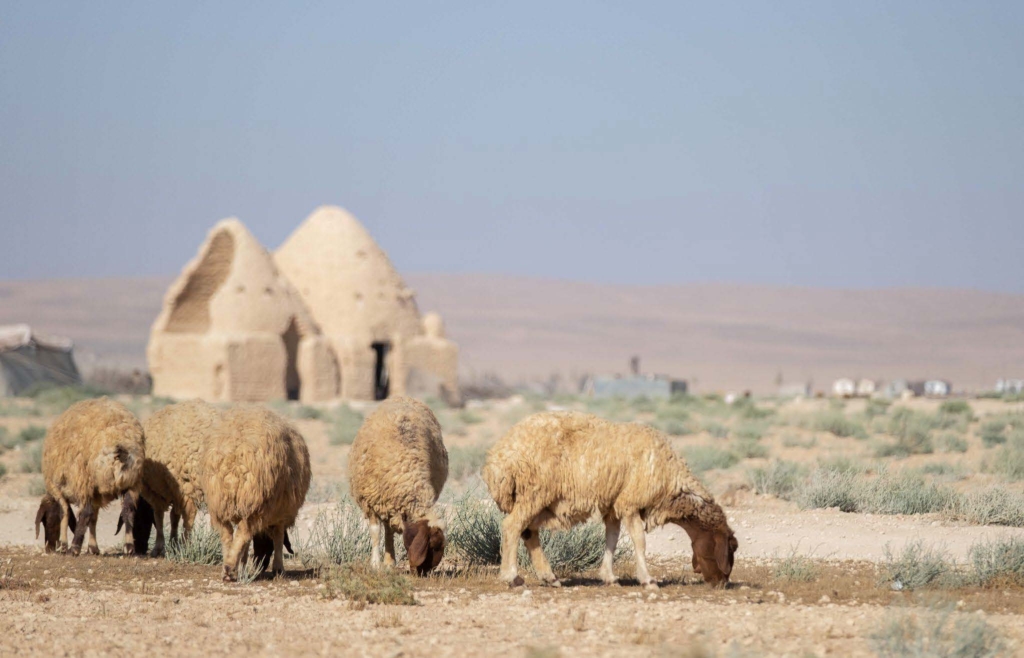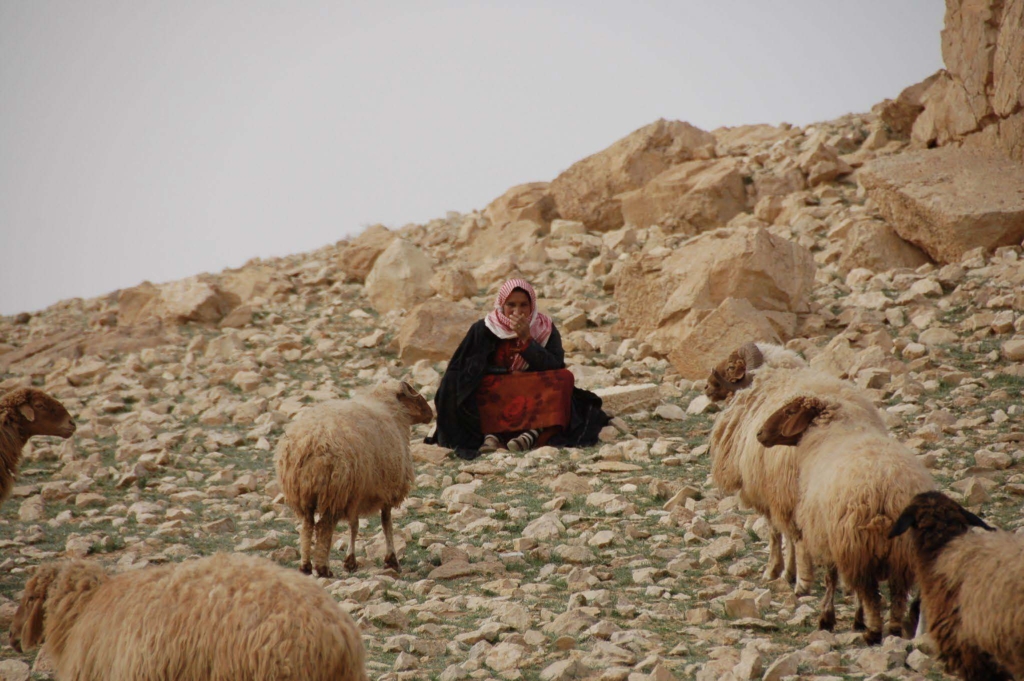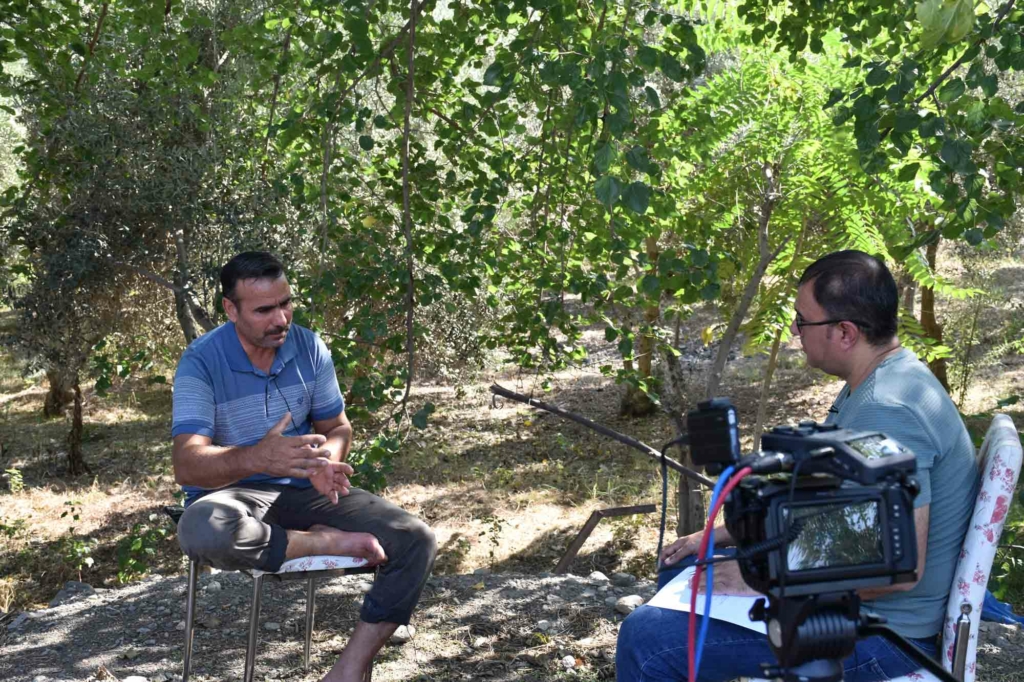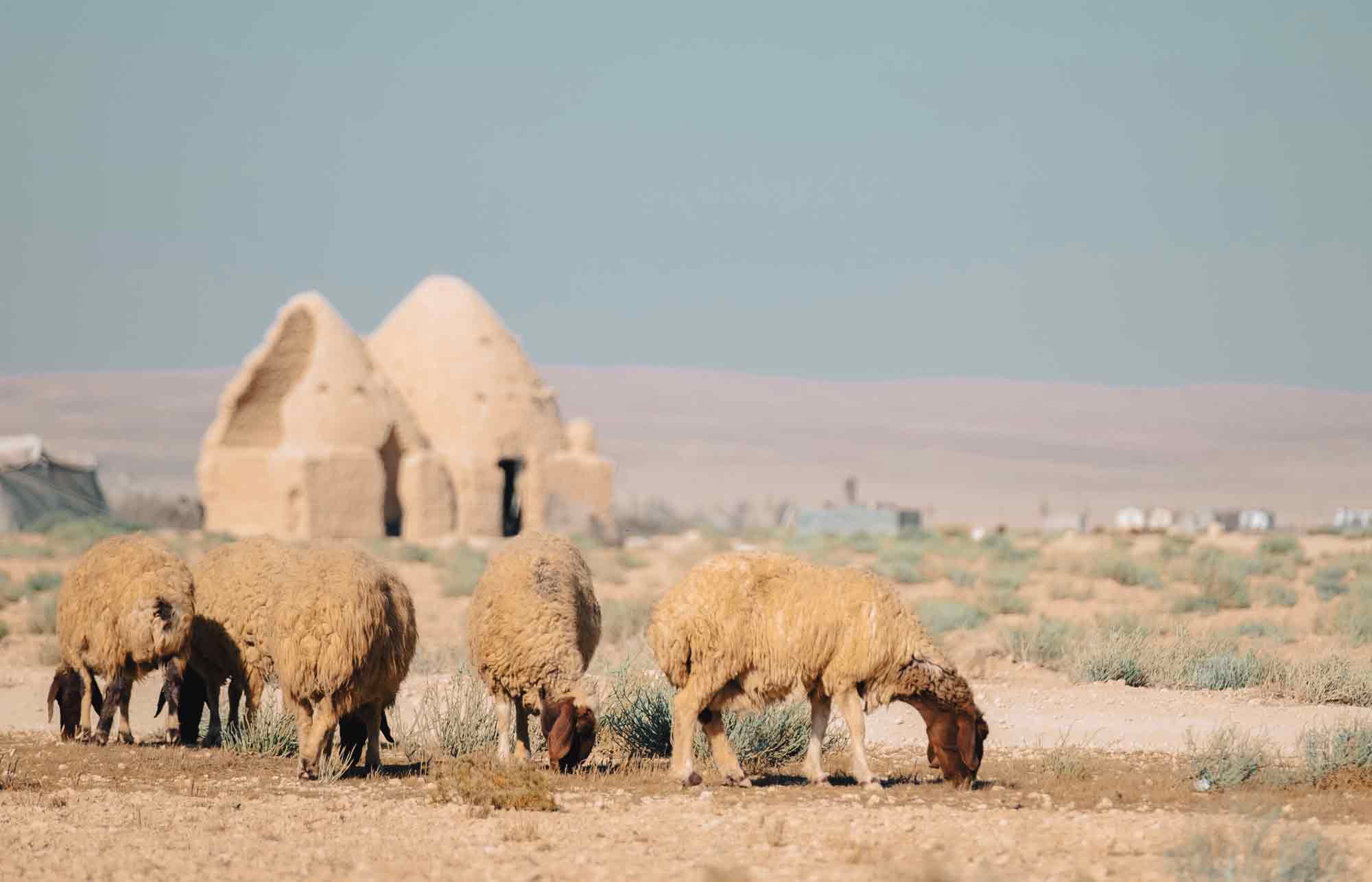By: Hassan Ali
Translation: Yousef Awad
Throughout the 20th century and into the present day, Awassi sheep farming has thrived in Palmyra and its desert regions. The Syrian government established directorates and service centers for livestock management under the auspices of the Ministry of Agriculture and the General Authority for the Management, Development, and Protection of the Badia (desert). The mission of these centers includes conducting statistical surveys of livestock populations, ensuring improved grazing reserves, and providing supplementary feed assistance to registered breeders through various sheep associations scattered across the desert.
The population of sheep in Syria reached approximately 18.3 million in 2010, with over 60% of this livestock belonging to the Awassi breed . Awassi sheep farming, along with other livestock, thrived in Palmyra and its surrounding desert areas until the outbreak of the Syrian revolution in 2011. However, most herds began to decline as a significant number of breeders fled the country, seeking refuge in other nations.
Mr. Mohammad Khair Al-Sabti, a 72-year-old employee at the Animal Wealth Center in Palmyra and a native of the city, shares his insights: “My work involved conducting surveys and performing artificial insemination for sheep in the desert areas surrounding Palmyra. My colleagues and I collected data on sheep populations and sent this information to the Farmers’ Association. The association, in turn, distributed feed to breeders, including nutritious fodder, bran, and barley.
The most prevalent livestock in Palmyra and its vicinity were sheep, camels, and goats. According to a 2009 statistical report, the sheep population in Palmyra and its surroundings exceeded 1.5 million head. Among the various sheep breeds found in the Syrian desert, the Awassi breed, also known as ‘Al-Naimi. It is considered one of the finest sheep breeds globally for the delicious taste of its meat and milk. Below is a list of the most famous Awassi sheep breeders in Palmyra and its surrounding desert areas, along with the number of animals they own, according to their respective sheep associations:
- Al-Akarsha Clan (Bani Khalid Tribe): They own more than 100,000 heads of Awassi sheep, mostly spread in the southern and southwestern sectors of Palmyra’s desert.
- Al-Haddidiyeen: After Bani Khalid comes the Al-Haddidiyeen tribe with an estimated wealth of 70,000 heads. They are located in the Al-Hamad area to the south and the Abu Rajmeen mountains to the north. Among them is the breeder Mohammad Al-Bakhtari, who had 14,000 heads but his herd decreased to 600 after the Syrian revolution in 2011.
- Al-Jamlan: This includes the breeder Ahmadouh, who has 4,000 heads of Awassi sheep and resides in Al-Dhaweed and Al-Hamad Al-Sharqi.
- Al-Amour: They settle in the Al-Amour mountain northeast of Palmyra, including the breeders Jumaa Al-Saudi and Khalif Al-Mutlaq, each with 3,000 heads.
- Al-Rutoub Clan (Bani Khalid Tribe): In the Al-Hamad area and Al-Dawwah plain, like Mohammad and Rabie Al-Hamad, each has over 1,000 heads.
- Al-Sabea: In the Hamima area, they had sheep until 2010, after which most of them left for Saudi Arabia because they are from the Al-Anza tribes.
- Al-Rawla: They had camels and sheep but moved to Saudi Arabia and obtained citizenship there.
- Urban Breeders in Palmyra: Included Hussein Al-Shihab, Hussein Al-Khalf, Khalid Al-Shafi, Bani Saeed Al-Saleh, Bani Hazeem, and the sons of Abdullah Al-Nadiwi.
In 1980, the municipality of Palmyra distributed grazing lands (locally known as “al-ma’alef”) to sheep breeders. Each parcel covered an area of approximately 1200 square meters, and the allocation was made at lower prices. However, after the outbreak of the Syrian revolution and the displacement of residents from Palmyra and the surrounding desert, much of the livestock disappeared. The sheep were either sold to wealthy local breeders or neighboring countries such as Jordan and Turkey. I propose that measures be taken to protect the animal wealth and consider cultivating the desert lands with crops like barley and wheat to significantly increase the overall prosperity”.
Photo Annex:


Figure 1: The Awassi sheep in the pastures of Palmyra. (Photo credit: Ahmad Al-Khanee)

Figure 2: An image of the speaker Mr. Mohammad Khair Al-Sabti.

Figure 3: An image of Mr. Amer Al-Hazim, one of the breeders of Awassi sheep from Palmyra.


